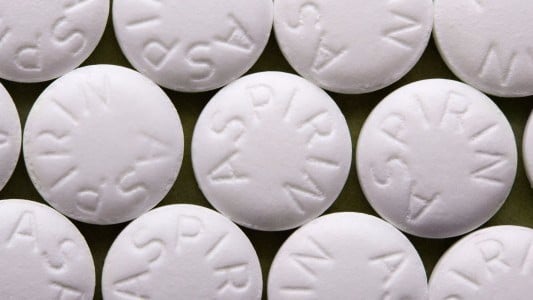Taking NSAIDs before or right after strenuous activity is incredibly prevalent…in fact, some personal trainers and athletic coaches actually recommend that their patients do so to “reduce inflammation” and help “facilitate recovery.” This is horrible advice for most healthy people. The truth is that the science overwhelmingly supports THE OPPOSITE. Yes it’s true, there are many studies that show that taking NSAIDs before, during or right after exercise actually results in less muscle adaptation (muscles getting stronger, faster, bigger, etc.) and over time their use actually contributes to the ACCELERATION of soft tissue damage. Before we get into this, I want to cover what NSAIDs are and how they work.
NSAID is an acronym for Non-Steroidal Anti-Inflammatory Drugs. These include over the counter drugs like ibuprofen (Advil), naproxen (Aleve) and Aspirin. There are also prescription drugs that are considered NSAIDs like Voltaren, Relafen, Naprosyn, Lodine, Indocin, and Daypro. NSAIDs work by reducing the Cox-1 and Cox-2 enzymes which have a key role in making prostaglandins. What this means in simpler terms is that the body’s natural system of inflammation and pain becomes blocked since prostaglandins play a key role in the modulation of inflammation. Less inflammation and pain sounds good right? Not so fast…
You see, inflammation is a VERY important signal that the body relies upon to tell it where it should send resources to heal, repair and even adapt and without this important signal, your body simply would not recover well from any trauma. Because exercise works by creating a small amount of trauma, which facilitates a recovery reaction and eventually adaptation, exercise LOSES some of its effectiveness in the presence of NSAIDs. In fact, studies have shown that the long-term use of NSAIDs with exercise actually REDUCE protein synthesis (muscle growth) and one study in particular showed a decrease in strength!
Inflammation, when unchecked and unbalanced, is at the root of almost all chronic diseases, however, completely BLOCKING the inflammatory process is not a good alternative. Instead, you want to make sure to have a HEALTHY inflammatory response. How do we do this? Through proper diet and exercise!
Foods high in sugar, wheat, dairy, processed meats, alcohol, and diets low in vegetables create an “unbalanced” inflammatory response. The average diet is also low in omega-3 fatty acids so, for many people, supplementing with omega 3 fatty acids reduces systemic unbalanced inflammation. There are also natural foods and herbs which balance out inflammation. Turmeric is on the top of the list as it is supported by the most clinical research.
The improper application of exercise also creates too much inflammation in a few ways. Muscle imbalances cause joint disfunction and overuse syndromes which produce too much inflammation for the body to deal with. This leads to chronic pain. The same is true of the over application of exercise intensity. Work out too hard and too much and inflammation is “over produced” making dealing with recovery a priority over adaptation (see Muscle Breakdown/Recovery Trap). The right kind of exercise will produce the right kind of inflammatory signal, which will result in stronger muscles. In fact, the right balance of prostaglandins is quite anabolic… They signal muscle adaptation!
Of course NSAIDs have their place. For acute injuries they provide relief and are well tolerated for short term use. For chronic long term pain, however, they can be detrimental. Instead of reaching for that bottle of Advil, seek to find the root of your pain. Is your diet causing inflammation? Are you exercising properly with measurable positive results and increases in performance? Those are the questions you should ask yourself instead of relying on modern chemistry to mask your pain.
I designed my program MAPS Anabolic to strategically stimulate an inflammatory response that contributes to muscle adaptation and growth without the negative effects that come from excess inflammation. To learn more about how MAPS accomplishes this, this click on this link for an informational video.
Almekinders, L. An in vitro investigation into the effects of repetitive motion and nonsteroidal anti-inflammatory medication on human tendon fibroblasts. American Journal of Sports Medicine. 1995; 23:119-123.
Greene, J. Cost-conscious prescribing of nonsteroidal anti-inflammatory drugs for adults with arthritis. Archives of Internal Medicine. 1992; 152:1995-2002.
Kulick, M. Oral ibuprofen: evaluation of its effect on peritendinous adhesions and the breaking strength of a tenorrhaphy. The Journal of Hand Surgery. 1986; 11A:100-119.
Slatyer, M. A randomized controlled trial of Piroxicam in the management of acute ankle sprain in Australian regular army recruits. American Journal of Sports Medicine. 1997; 25:544-553.
Hauser RA. The Acceleration of Articular Cartilage Degeneration in Osteoarthritis by Nonsteroidal Anti-inflammatory Drugs. Journal of Prolotherapy. 2010; 1(2):305-322.
Hochberg MC, Perlmutter DL, Hudson JI, Altman RD. Preferences in the management of osteoarthritis of the hip and knee: results of a survey of community-based rheumatologists in the United States. Arthritis Care Res. 1996;9(3):170–176.
Merrill C, Elixhauser A. Hospital stays involving musculoskeletal procedures, 1997–2005: statistical brief #34. Healthcare Cost and Utilization Project (HCUP) Statistical Briefs. 2006 MD, USA.
Krijthe BP, Heeringa J, Hofman A, Franco OH, Stricher BH. Non-steroidal anti-inflammatory drugs and the risk of atrial fibrillation: a population-based follow-up study. BMJ Open. 2014; 4(4): doi:10.1136/bmjopen-2013-004059
Huskisson EC, Berry H, Gishen P, Jubb RW, Whitehead J. Effects of antiinflammatory drugs on the progression of osteoarthritis of the knee. LINK study group. longitudinal investigation of nonsteroidal antiinflammatory drugs in knee osteoarthritis. J. Rheumatol. 1995;22(10):1941–1946.





